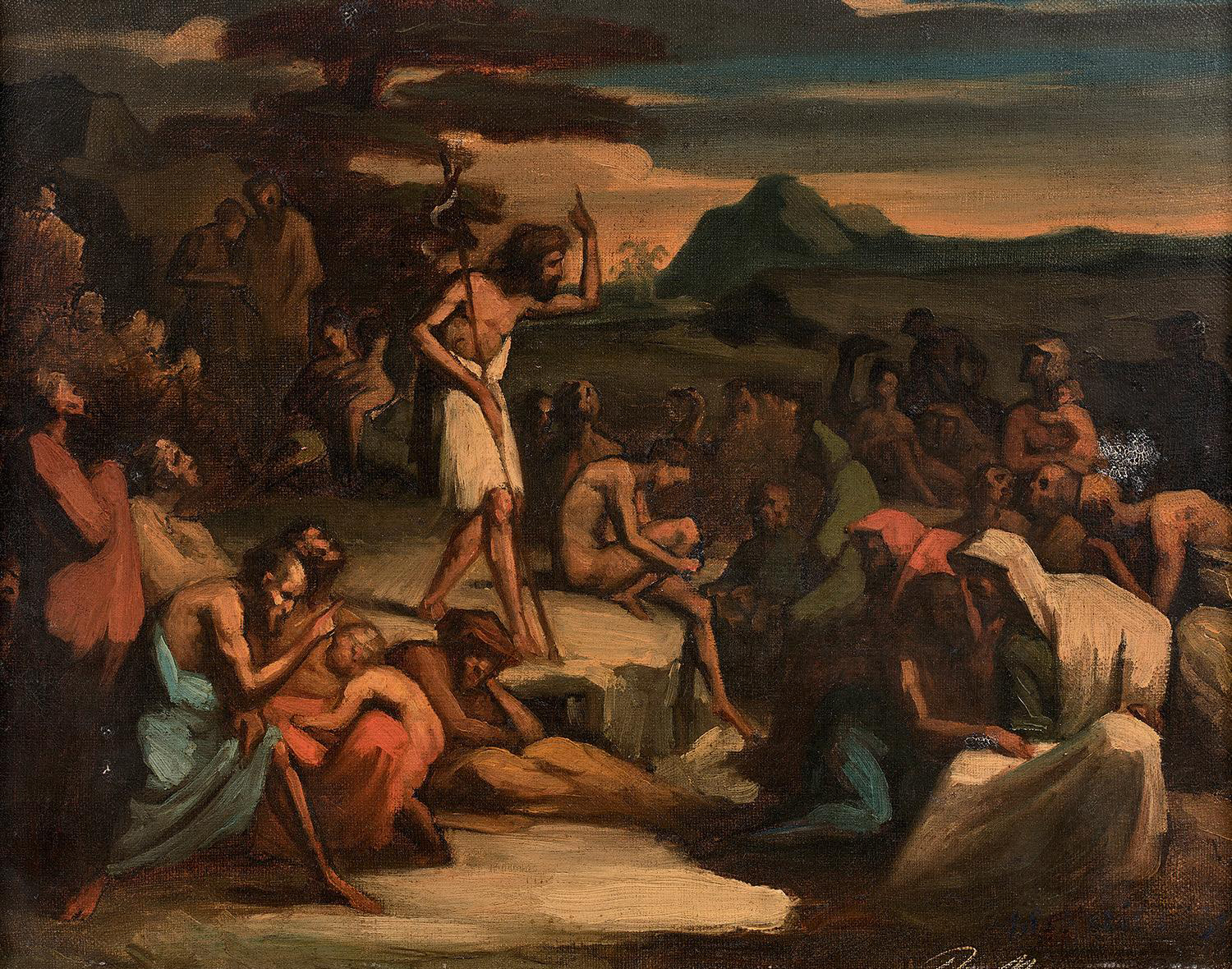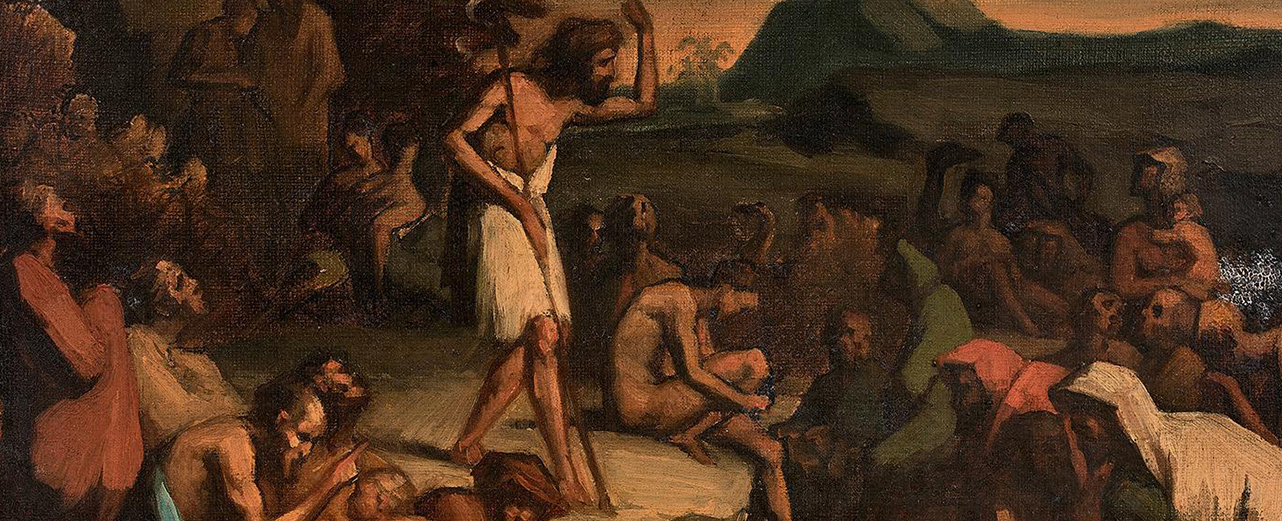Jean François MILLET (1814 - 1875)
« La prédication de saint Jean-Baptiste »
1839
Oil on canvas
32,5 x 40 cm
Signed, numbered and dated lower right " 18 avril " ; " 18 " ; " Drolling ".
Purchase Tajan sale (June 22, 2022): 20 800 €.
Financial arrangement: 10 000 € heritage fund, 10 800 € Beaux-Arts de Paris
Inventory number: 2022 ?
Jean-François Millet is one of the immensely popular artists whom historiography rarely associates with the École des Beaux-Arts. His work is in fact linked to the Barbizon School movement, which was known to have advocated a return to the direct study of nature before the Impressionists, a practice that was traditionally opposed to the teaching of the Rue Bonaparte. In reality, his work is the result of an important work of composition and petrified of religious or mythological culture, whose knowledge comes in large part from his passage at the School. This sketch is the only work by the artist that can be linked with Millet's attempts to obtain the most prestigious award offered to students of the École, the Prix de Rome. The subject relates to the first stage of the 1839 competition and the work bears the material traces of this: the date, April 18, the signature of the teacher in charge of the organization, Michel Martin Drolling (1786-1852), as well as the number given to the work, which allowed the author to be identified while preserving his anonymity during the judging. This sketch is in stark contrast to the compositions of young contemporary artists, of which the Beaux-Arts de Paris collection has an exemplary series. It is distinguished by the great simplification of the forms, the dark colors, the use of black rings, the complexity of the scene with its many characters, sometimes entangled, and the rendering of the landscape, dark and tormented, which hints at the future fame of Millet, his ability to give nature a spiritual dimension. The atypical character of this very beautiful sketch thus attests that academic teaching did not simply standardize talent!

Jean François MILLET (1814 - 1875) « La prédication de saint Jean-Baptiste »







